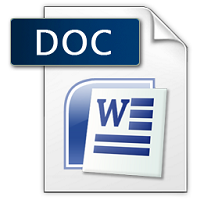₹198.00
Scroll down for Match your questions with Sample
Note- Students need to make Changes before uploading for Avoid similarity issue in turnitin.
Another Option
UNIQUE ASSIGNMENT
0-30% Similarity in turnitin
Price is 700 per assignment
Unique assignment buy via WhatsApp 8755555879
Description
| SESSION | NOV-DEC2023 |
| PROGRAM | MASTER OF COMPUTER APPLICATIONS (MCA) |
| SEMESTER | II |
| COURSE CODE & NAME | DCA6201 – OPERATING SYSTEM |
Assignment Set – 1
- Discuss different types of Operating System.
Ans 1.
Operating systems (OS) are essential software that manage computer hardware and software resources, providing common services for computer programs. They come in various types, each catering to different needs and platforms.
Desktop Operating Systems
Desktop operating systems are designed for personal computers and workstations. They offer a user-friendly Its Half solved only
Buy Complete from our online store
https://smuassignment.in/online-store/
MUJ Fully solved assignment available for session SEPT 2023.
Lowest price guarantee with quality.
Charges INR 198 only per assignment. For more information you can get via mail or Whats app also
Mail id is aapkieducation@gmail.com
Our website www.smuassignment.in
After mail, we will reply you instant or maximum
1 hour.
Otherwise you can also contact on our
whatsapp no 8791490301.
Top of Form
- a.Write a detailed note on FCFS, SJF and Priority scheduling taking suitable examples.
- What is Preemptive and Non-preemptive Scheduling?
Ans 2.
First Come First Serve (FCFS) Scheduling
First Come First Serve (FCFS) is the simplest type of CPU scheduling algorithm that schedules according to the arrival times of various processes. The process that arrives first gets executed first. For example, consider three processes P1, P2, and P3 arriving at times 0, 2, and 4, and requiring 3, 5, and 2 units of time respectively for completion. FCFS will schedule these
- Discuss Banker’s algorithm deadlock avoidance mechanism.
Ans 3.
Banker’s Algorithm
Introduction to Deadlock Avoidance In computer systems, particularly in operating system design, deadlock avoidance is a critical aspect to ensure smooth operation and resource allocation. One of the most renowned methods developed for this purpose is the Banker’s Algorithm. This algorithm, analogous to a banker deciding loans, works on the principle of safe state management and preemptive resource allocation to prevent deadlock, a state where processes wait
Assignment Set – 2
- a.What is PCB? What information is stored in it?
- What are monitors? Explain.
Ans 4.
Process Control Block (PCB) and Monitors in Computing
The world of computing is vast and complex, with various components and systems working together to facilitate smooth operations and multitasking. Two fundamental elements in this domain are the Process Control Block (PCB) and monitors. Understanding these concepts is crucial for anyone
- Discuss IPC and critical-section problem along with use of semaphores. 10
Ans 5.
The study of Inter-Process Communication (IPC) and the critical-section problem, along with the use of semaphores, is a crucial aspect of understanding concurrent processes in computer science. These concepts are foundational in the development of efficient and effective multi-process and multi-threaded systems.
Inter-Process Communication (IPC)
IPC refers to the set of mechanisms and protocols that enable processes to communicate and synchronize with each other. This is essential in systems where multiple processes are running simultaneousl
- Explain the different Multiprocessor Interconnections and types of Multiprocessor Operating Systems.
Ans 6.
Multiprocessor systems, characterized by multiple CPUs sharing common resources like memory, are a cornerstone of high-performance computing. These systems are interconnected through various architectures and managed by specialized operating systems. Understanding these interconnections and the


